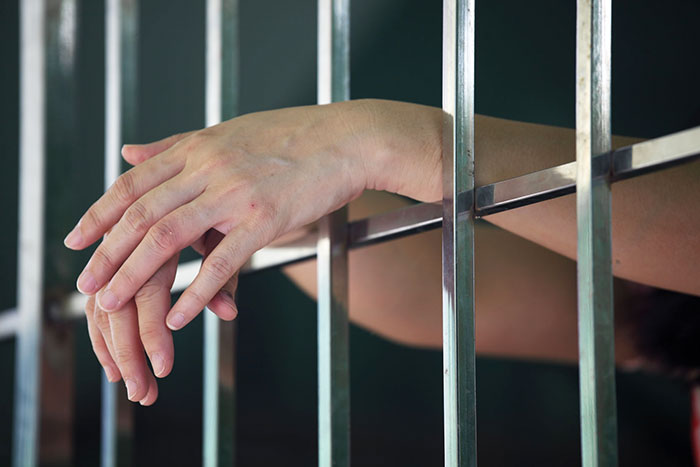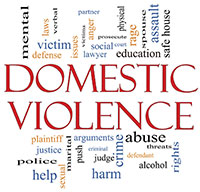| No Justice for Women Jailed for Defending Themselves | |||
| by Elayne Clift | |||
|
|||
My friend Teresa, serving time in a California prison, is a perfect example. She’s served 27 years of a 25-years-to-life sentence for unintentionally killing her stepfather while he was raping her, a man who had been sexually abusing her from age 7. Recently, she sought a retrial because of egregious errors that had occurred in her initial trial. At the hearing for retrial, the district attorney, who maintained that she is a sociopath, asked that terrible question: “Why didn’t you testify to the abuse in the 1992 trial?” Her response: “Because I wasn’t ready to sit in a chair like this and have a man like you tell me he didn’t believe me.” |
|||
 |
|||
| Teresa has worked for over 25 years, personally and through prison self-help programs, to reach the point psychologically—and to find the courage to self-advocate—so that she could tell the truth about what happened to her. The result? The judge ruled that he "did not find her credible," alleging that she was too "practiced" in her presentation. He claimed that because he'd spent over 30 years on the bench, he could, to borrow Michael Bloomsburg's line, "tell a con when he saw one."
Now, unless Teresa can secure a pro bono lawyer to take the matter further, she is likely to be turned down yet again for parole in 2018. The details of Teresa's story are complex, but the essential thing to know is that perjury was committed at her first trial by an angry relative, now deceased. Her mother, who was also sexually abused by the same man, has been incarcerated with her for all these years, accused of being a conspirator in a premeditated murder. No psychological testing was done during the first trial, and the issue of domestic violence was never raised. Now both women are model prisoners who pose no threat to society. Yet they both stand a chance of never leaving prison. And they are not alone. Stories like these of women incarcerated for finally standing up to their sexual abusers abound. A recent one receiving lots of attention on social media involves a teenager named Bresha Meadows who killed her abusive father last summer to save herself, her mother, and her siblings. Bresha, now 15, has been in a treatment facility since January, awaiting her trial for murder, scheduled for May 22. Fortunately, her case is being kept in juvenile court, so even if she is convicted, she will not be kept behind bars past age 21 and will be in a juvenile facility, not an adult prison. There are other cases like that of Bresha; we just don't hear about them. That's why justice advocate Victoria Law and other women are organizing groups like the National Council for Incarcerated and Formerly Incarcerated Women and Girls. The council, the nation's only organization founded and run by women who have been or are still in prison, constitutes a powerful network of women whose voices are finally being heard at conferences and other public forums, in courtrooms and judges' chambers, and in the media. An estimated 34,000 women are currently in state prisons alone for violent crimes, 10,000 of them for murder. Two studies in California and New York indicated that the majority of women incarcerated for killing significant others had been abused by them. In California, that number is 93 percent, with 67 percent indicating that the homicide directly resulted from an attempt to protect themselves or their children. In New York State, 67 percent of women sent to prison for murdering an intimate had been abused by that person. No US government data currently exists for how frequently abuse plays a direct role in cases of women incarcerated for violent crimes. Because their crimes are considered violent, parole is infrequently granted to these female offenders who were victims of domestic or sexual violence. In New York State formerly incarcerated women and other advocates are pushing for a Domestic Violence Survivors Justice Act that would allow judges to take into account abuse when sentencing survivors. It would also allow currently incarcerated survivors to apply for resentencing after eight years. If my friend Teresa lived in New York instead of California, that would be encouraging. As it is, she goes on with her battle for justice. It's not easy. Listen to her words in a letter sent to her supporters. "The judge used my last 25 years of self-help and recovery from the trauma against me. From the first day in prison we were told not to expect parole if we did not dive head first into self-help. So I did just that, coming to terms with the abuse, breaking down walls of denial, exposing truths that are humiliating. I went from victim to survivor. I found my voice. I grew stronger, a little braver, a bit more self-confident. I did what the Parole Board wanted me to do. It took me 25 years to be that woman on the witness stand but I did it. And it all backfired on me. The judge wrote in his denial that I seemed 'studied and rehearsed' and therefore was 'unbelievable.' He took my strength and courage under fire as performance. What he really was saying is that no victim can ever be strong." |
|
||
"The truth means nothing anymore. Did it ever?" Teresa wrote. Then in her admirable, inimical way, she said, "I'm so mad I can't quit. I go forward in faith. My faith keeps me strong." It keeps me strong too. That's why when she walks out, I'll be there to greet her.
|
|||
|
Elayne Clift writes about women, health, and social issues from Saxtons River, Vt. She has corresponded with Teresa for 20 years and is part of a support group working toward the release of Teresa and her mother. To learn more, eclift@vermontel.net. A version of this article first appeared in the Daily Kos, February 2017.
|
||

